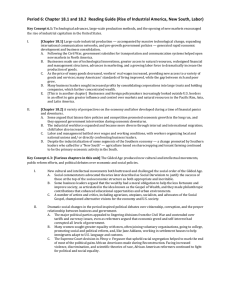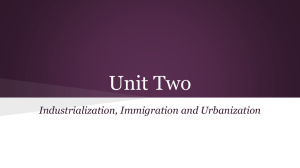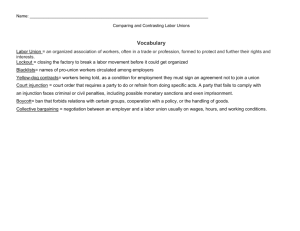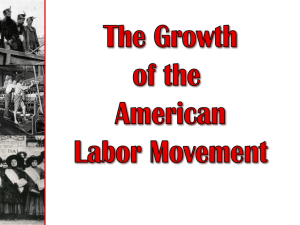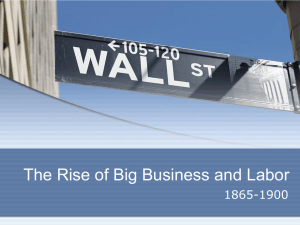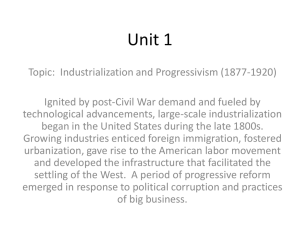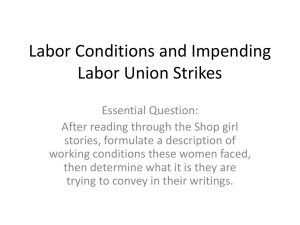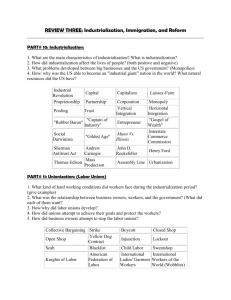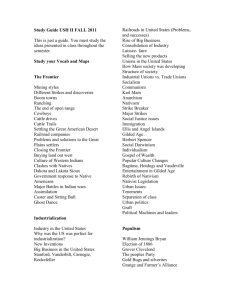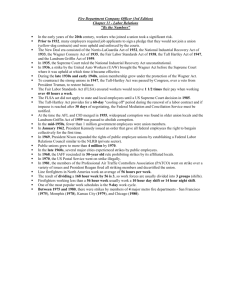STRIKES – What Happened? Reasons? Reactions?
advertisement
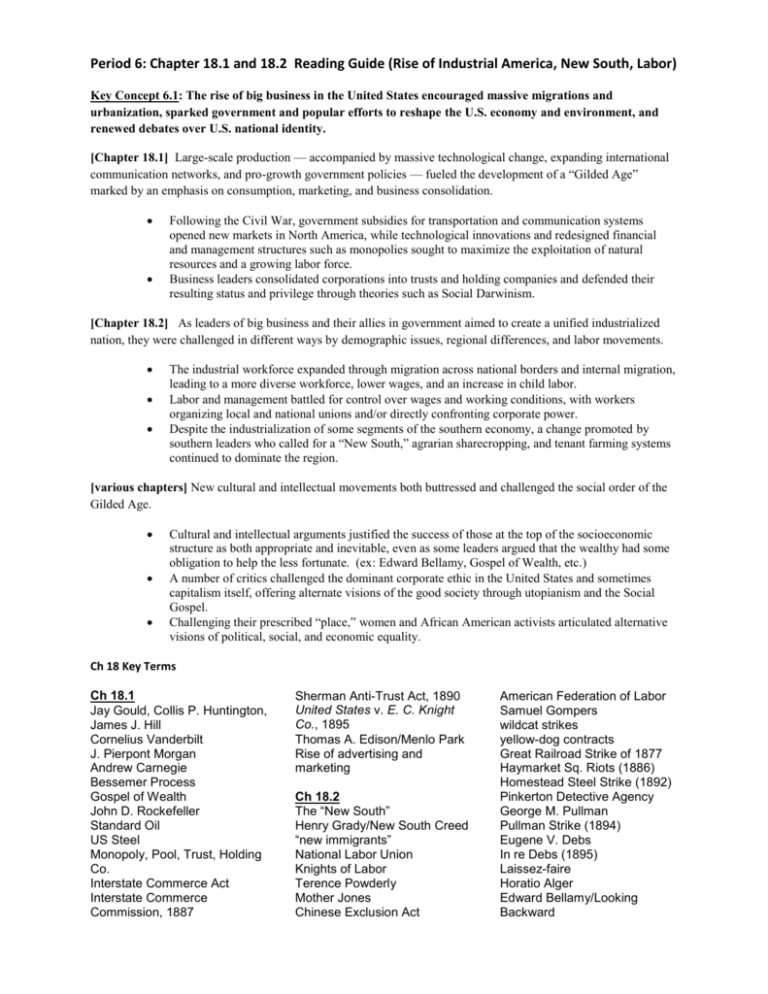
Period 6: Chapter 18.1 and 18.2 Reading Guide (Rise of Industrial America, New South, Labor) Key Concept 6.1: The rise of big business in the United States encouraged massive migrations and urbanization, sparked government and popular efforts to reshape the U.S. economy and environment, and renewed debates over U.S. national identity. [Chapter 18.1] Large-scale production — accompanied by massive technological change, expanding international communication networks, and pro-growth government policies — fueled the development of a “Gilded Age” marked by an emphasis on consumption, marketing, and business consolidation. Following the Civil War, government subsidies for transportation and communication systems opened new markets in North America, while technological innovations and redesigned financial and management structures such as monopolies sought to maximize the exploitation of natural resources and a growing labor force. Business leaders consolidated corporations into trusts and holding companies and defended their resulting status and privilege through theories such as Social Darwinism. [Chapter 18.2] As leaders of big business and their allies in government aimed to create a unified industrialized nation, they were challenged in different ways by demographic issues, regional differences, and labor movements. The industrial workforce expanded through migration across national borders and internal migration, leading to a more diverse workforce, lower wages, and an increase in child labor. Labor and management battled for control over wages and working conditions, with workers organizing local and national unions and/or directly confronting corporate power. Despite the industrialization of some segments of the southern economy, a change promoted by southern leaders who called for a “New South,” agrarian sharecropping, and tenant farming systems continued to dominate the region. [various chapters] New cultural and intellectual movements both buttressed and challenged the social order of the Gilded Age. Cultural and intellectual arguments justified the success of those at the top of the socioeconomic structure as both appropriate and inevitable, even as some leaders argued that the wealthy had some obligation to help the less fortunate. (ex: Edward Bellamy, Gospel of Wealth, etc.) A number of critics challenged the dominant corporate ethic in the United States and sometimes capitalism itself, offering alternate visions of the good society through utopianism and the Social Gospel. Challenging their prescribed “place,” women and African American activists articulated alternative visions of political, social, and economic equality. Ch 18 Key Terms Ch 18.1 Jay Gould, Collis P. Huntington, James J. Hill Cornelius Vanderbilt J. Pierpont Morgan Andrew Carnegie Bessemer Process Gospel of Wealth John D. Rockefeller Standard Oil US Steel Monopoly, Pool, Trust, Holding Co. Interstate Commerce Act Interstate Commerce Commission, 1887 Sherman Anti-Trust Act, 1890 United States v. E. C. Knight Co., 1895 Thomas A. Edison/Menlo Park Rise of advertising and marketing Ch 18.2 The “New South” Henry Grady/New South Creed “new immigrants” National Labor Union Knights of Labor Terence Powderly Mother Jones Chinese Exclusion Act American Federation of Labor Samuel Gompers wildcat strikes yellow-dog contracts Great Railroad Strike of 1877 Haymarket Sq. Riots (1886) Homestead Steel Strike (1892) Pinkerton Detective Agency George M. Pullman Pullman Strike (1894) Eugene V. Debs In re Debs (1895) Laissez-faire Horatio Alger Edward Bellamy/Looking Backward Reading Questions Ch 18.1 1. Discuss the reasons for rapid industrial expansion and the growth of huge corporations between 1860 and 1900. What innovations in technology and business practices led to these changes? 2. Specifically, how did the railroad industry pioneer many of these changes? 3. How were Carnegie, Rockefeller, and other captains of industry able to dominate their fields? 4. What were some of the changes in Americans’ daily lives in the period? 5. What benefits did the American people reap from these developments? What were some of the social and economic costs or problems produced by industrialization and the growth of big business? Ch 18.2 6. What was the New South Creed? 7. What were the characteristics of the Southern Mill Economy? 8. Compare/contrast the post-war textile industry in the South with the pre-war textile industry in New England. 9. How and why did the South’s experience with industrialization differ from that of the north and the Midwest? 10. How did technological innovations lead to changes in labor systems and social class? (yes, that one again..) 11. Hardships of Industrial Labor (identify at least four issues): 12. Was there a single “immigrant experience” in the time period, or was the experience of immigrants from different countries and social classes more diverse than similar? 13. What changes did industrialization bring for women? 14. What was the Gospel of Success? 15. Labor Unions: see the Graphic Organizer [must know the strikes and unions!] 16. What is Social Darwinism and how was it applied in the period? 17. Socialism/Marxism – How were these ideas a reaction to the effects of industrialization? Labor Organizer What conditions led to the formation of labor unions? UNION Knights of Labor Leadership & Goals Membership American Federation of Labor (AFL) Industrial Workers of the World American Railway Union STRIKES – What Happened? Reasons? Reactions? Railway Strike of 1877 Haymarket, 1886 Homestead, 1892 Pullman, 1894 What conditions led to the decline of the labor unions? IDENTIFY Mary Harris “Mother” Jones Collective bargaining scab Yellow-dog contract What successes did labor see in this time? What failures or challenges did labor face? Why were some efforts more successful than others?
